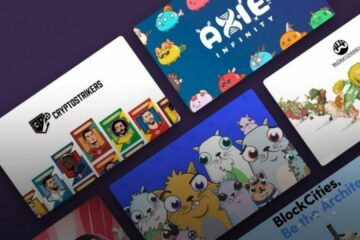In the case of digital files, is it possible to distinguish between the original and the copy? Yes, a technology called NFT promises. To find out more about it, DW’s business editorial team dared to experiment and put a digital work up for auction on the Internet.
There are currently a few fractions of the crypto currency ETH in the wallet. This stands for Ether or Ethereum, the second largest crypto currency after Bitcoin (there are thousands).
Bitcoin, Ethereum and many others are each based on a so-called blockchain. It’s a kind of endless cash register in which all activities of a cryptocurrency are written down: every payment, every transfer, everything.
All of this takes place on a decentralized basis, i.e. without superordinate bodies such as central banks or governments. Instead, all entries in the large cash register are made by computers scattered around the world, which have to solve cryptographic computing tasks (hence the crypto in crypto currency). The principle here: you shouldn’t be able to cheat. Individual entries cannot be changed without compromising the entire system.
Hungry for NFT energy
Because of the computing power required for this, this way of working, which is also called proof-of-work, consumes a lot of energy and is therefore heavily criticized for ecological reasons. There are already alternative methods that require less energy, such as proof of stake. Ethereum has announced that it will switch to this procedure in the coming year.
Despite some similarities, cryptocurrencies have different capabilities. In particular, Ethereum and some newer currencies advertise a greater range of functions than Bitcoin, which goes far beyond simply paying.
An NFT (non fungible token) turns a digital file into a potentially valuable original, because the file can be distinguished from its theoretically endless copies. In principle, an NFT is just an entry in the blockchain that points to a digital file and thus identifies it as an original. If the NFT changes hands, this is noted in the blockchain as is any other transaction.
Self-executing contracts
A smart contract is a program code that contains agreements and executes them independently when they come into force.
Before we get into NFT, let’s briefly recap what a blockchain is so that it can be seen how non-fungible tokens fit in there. The most famous blockchain project is certainly Bitcoin. However, the Bitcoin blockchain is limited to use as a cryptocurrency platform. This is not the case with all blockchains.
In general, a blockchain is a type of database made up of blocks that are strung together like pearls on a chain. Each block contains, on the one hand, the actual data that is to be stored in it and, on the other hand, a unique hash value that ensures that the data content is unchanged.
In addition to its own hash value, each block on the chain knows the hash value of the previous block. In this way, the blockchain authenticates itself in a kind of chain reaction. If a hash were to be changed anywhere in the chain, the chain would break.
What are non-fungible tokens (NFT) ?
In connection with the blockchain, the term token is most closely linked to its use as an asset. A token can also represent an asset or an economic good or be a digital equivalent of a real good.
In relation to a cryptocurrency, all tokens are fungible, i.e. interchangeable. This means that each token represents an equal asset. It doesn’t matter what specific token you have. It is worth the same as any other holder’s token. This is how our money works too. It doesn’t matter which specific ten-euro note you use. You can also use two five-euro bills or five two-euro coins, or any combination. The means, in this case means of payment, are exchangeable.
NFT: What’s Behind the Million Dollar JPEGs?
Spending millions of dollars on a JPEG? A year ago hardly anyone could have imagined that. However, for a few months now, non-fungible tokens (NFT) have been causing a lot of excitement. The digital collectibles are in great demand and are all the rage on the art market. In an interview, we asked NFT artist Twerky what is behind the sometimes flashy GIFs and JPEGs and how the scene ticks.
Non-fungible tokens, or NFT for short, have been a hot topic since the beginning of the year. The digital art market is booming and every week you can read new headlines of digital works of art that have been auctioned for several million dollars. We’ll talk to Twerky about what’s behind NFT. The UI designer has been successful in the digital art scene since November 2019. He takes us into the extraordinary and colorful world of the NFT. Twerky tells us in an exclusive interview what inspires him about the digital art market and why the NFT hype brought him more hate than sales!
Today, the term token is mostly associated with blockchain technology. A token represents an asset or an asset and is exchangeable (fungible). That is, each token represents an equal asset. For example, a Bitcoin is currently worth around € 30,000 (as of 06/02/21). It doesn’t matter what bitcoin you own, every bitcoin has the same value. It is different with NFT (non-fungible tokens). The tokens are not interchangeable and each NFT represents a specific value and is therefore unique. NFT are digital assets, of which there are only one or a few. These include, for example, trading cards, virtual properties or digital works of art.
There are hardly any limits to the imagination of crypto fans with smart contracts: They dream of a decentralized financial sector (DeFi) in which even highly complex financial products such as derivatives only need a smartphone and a wallet – but no banks.
Change, yes – but also better?
This new financial world has the potential to mess up and break up existing structures – similar to what has already happened in the music and film industry, where Spotify and Netflix are now more powerful than record companies and film studios.
The expectations are particularly high in countries where the old structures hardly exist – countries without a well-functioning financial sector, without legal security or without a stable currency.
However, this does not mean that the financial world of the future will inevitably be better or even cheaper. Examples from the DW auction: Each entry in the blockchain costs money, a so-called gas fee that has to be paid in ETH. If you take the credit card, you can quickly incur eleven percent fees before fresh cryptocurrency is in the wallet. That is significantly more than even classics like Western Union or Moneygram use for money transfers around the globe.



0 Comments